FORM 4 GEOGRAPHY 2018 ANSWERS
PART ONE:- MULTPLE CHOICE QUESTIONS – circle the correct answer
| 1 | A |
| 2 | B |
| 3 | A |
| 4 | D |
| 5 | A |
| 6 | B |
| 7 | C |
| 8 | D |
| 9 | B |
| 10 | D |
Part two: structured questions – answers of all questions
1) A) Weather station: a place where weather elements measured and recorded
B) List of thermometers kept in a Stevenson screen:
-
- Maximum thermometer
- Minimum thermometer
- Wet bulb thermometer
- Dry bulb thermometer
2) A) Answer questions related to the following map:
- Convert 1:6,000,000 into Statement = 1cm to 6000,000/100,000= 1cm to 60km
B) Distance and direction of Las Anod & Bosaso = 60km/cm x 8cm = 480kmsw
C) I) Possible human activities in Hafun are mainly trading and businesses in common and fishing and salt collecting in particular
II) Possible human activities in Bouhoodle are mainly trading and business in common and agriculture esp raisng animals and forestry in particular.
3) Label world fishing grounds:
-
- A) North-east Pacific fishing ground
- B) North-west Atlantic fishing ground
- C) North-west Pacific fishing ground
- D) Coastal Peru fishing ground
4) Label Large rivers shown on the map of Africa
-
- A) R. Niger
- B) R. Congo / Zaire
- C) R. Nile
- D) Juba
- E) Limpopo
5) A) VICTORIA IS THE Largest lake in Africa
B) Significances of lakes to man
-
- For communication
- For hydro-electric power development
- For regulating flow of river water
- As source for fish
- For water storage
- For providing irrigation water
- For developing tourist industry
- Moderating influence on climate
6) A) distinguish Latitude from longitude lines
-
- Latitude or parallel lines: Angular distance of a place north or south of the earth’s equator or line on the globe run East-West direction
- Longitudes or Meridians: Angular distance of a place east or west of the prime meridian or lines on the globe that run north-south direction
B) Calculating a longitude from a local time: X = 12 am; GMT = 6 am = Longitude X = 12-6 = 6 x 15 = 90 ; we see that time in X is ahead of GMT. Hence longitude X = 90E
7) A) Mortality Rate: Refers to the rate of deaths among members of a population
B) Causes of mortality rates in Puntland:
-
- Low nutritional standards
- Low hygiene standards
- Prevalence of natural calamities
- Epidemics and disease outbreaks like corona virus and HIV/AIDS
- Tribal clashes / human made calamities
- Emigration, movement of people from their country of origin.
8) Differentiate between RURAL and URBAN settlements
1) Urban settlement characteristics:
-
- They have large population size
- Population density is high
- They are engaged in non agricultural activities
- Mainly have nucleated buildings
- Have infrastructure of built environment
2) Rural settlement characteristics:
-
- Population density is small
- Settlement size is small
- Mainly have dispersed buildings
- They are mainly concerned with primary activities
- They are mainly engaged in agricultural works
9) A) Trade: Buying and selling goods and services between two persons, firms or countries
B) Differentiate between export and import trade:
-
- Export trade: selling goods and services to foreign countries. Eg Somalia exports bananas, livestock, hides, skins and frankincense to foreign countries
- Import trade: buying of goods and services from foreign countries. Eg Somalia imports petroleum, medicines, machinery and spare parts, foodstuffs, textiles, etc
10) A) Environmental hazards: dangers or disasters within the environment due to natural or human causes
B) Environmental hazards commonly occur in Puntland:
-
- Environmental hazards: droughts, floods, lightning, windstorms, pests and diseases, etc
- Human hazards: Tribal clashes, fires, soil erosion, desertification, deforestation, etc
PART THREE: EXTENDED QUESTIONS – Answer any questions in this section
1) A) Differentiate between terms: metallic and non-metallic minerals
-
- Metallic minerals: As the name suggests, metallic minerals are the minerals that contain one or more metals. Eg manganese and nickel
- Non-metallic minerals: As the name suggests, non-metallic minerals are that do not contain metals eg phosphates, potash, asbestos, sulphur, etc
B) Describe factors influencing mining minerals
-
- Capital: Adequate investment money available is required to buy machinery, furnitures and hire skillful labour to extract mineral deposit
- Market: Consumer people or firms available are required who buy products
- The size of the deposit: large sized deposits are extracted but small ones are left because they are uneconomical
- The quality of the mineral: High quality deposits are extracted and low quality deposits are left because they are uneconomical
- The ease of mining the mineral: if the mineral deposit can easily be extracted, it is mined but if its extraction is difficult it is not mined
- The ease of transporting mineral to where it is to be smelted: good transport links encourages extraction of mineral deposits and poor transport discourages extraction of mineral deposits
- Value of minerals: some minerals like gold, diamond and uranium are in great demand all over the world. So they are mined.
- Technology: Machines and skillful personnel are required to extract mineral deposits from the earth’s crust.
C) Explain how salt is processed from sea water: “water from the ocean is kept in evaporation ponds where high temperature causes water to evaporate leaving behind deposits of salt which manually extracted”. Salt is locally consumed and much of it is exported to inland areas and nearby countries.
2) A) Define terms “wildlife and national parks”:
-
- Wildlife: plants and animals in their natural habitat as part of our natural resource
- National park: Area set aside for the preservation of scenery, wildlife and historical sites like Gendershe, Zeila, Taleh etc
B) Importance of wildlife to man/why we manage them?:
-
- For tourist attraction which brings foreign exchange and revenue for the government
- Creates employment opportunities for people and raise their standard of living
- Wildlife conservation has led to proper utilization of marginal areas
- Wildlife preservation helps to preserve and protect water catchment areas and soil
- They form a source of food
- Forms a source of medicine
- It has led to development of industries by providing raw materials
- It has led to development of infrastructure when good roads are built to make game park more accessible to tourists
- It has diversified the economic base of the country
3) A) Descriptions of benefits and problems HEP can cause
i) Descriptions of benefits HEP can cause
-
- Reduces prices of power and make electricity available to many people
- Saves foreign exchange that would have been used to import other forms of energies like cool and oil
- Provides power used to operate in industries
- Dams Create employment opportunities
- Dams also provides water for irrigation
- Dams also help in controlling flood water
- Dams also provide rich fishing ground
- Man-made lakes provide transport links like ships and boats.
- Dams act as tourist sites
ii) Description of Problems experienced as HEP development
-
- Man-made lakes can cause displacement of people
- Resettlement programmers are difficult and expensive to handle
- Cultural ties of displaced people are disrupted since they cannot be resettled in a same place
- Water borne diseases are dangerous
- Man-made lakes divide areas leading to high costs in advancing innfratracture
- Man-made lakes can damage wildlife habitat
- It may harm water quality in lower course of the river
- It may also cause fish migration to be obstructed
4) A) Differentiate between primary and secondary industry
| Primary industry | Manufacturing industry |
| Industries involved in exploitation of natural resources like mining, fishing, agriculture, forestry etc | Industries rely on primary products and make final products directly from raw material like sweets, bread, cement, cigarette, pulp and paper industries |
B) Reasons why countries strive to become industrialized
-
- Industry earns foreign exchange after exporting manufactured goods
- Develops other sectors of the economy like education, health care, transport and social amenities
- Industries employ people providing them with income
- Helps people to raise their standard of living
- Industry has led to diversification of the economy
- Industrial exports help in balance of trade between Somalia and her trading partners
- It has led to development of infrastructure when good roads are built to make game park more accessible to tourists
5) A) What type of natural region photograph indicates?
i) Tropical desert region/ biome
ii) Possible human activities in this biome
-
- Water does occur in oases and settled agriculture takes places
- Nomadic herding takes in some desert areas like Arabian Sahara desert
- Oil and mining mineral is common in the Arabian deserts
- Desert people mainly rely on trading activities
B) Advantages of animal transport:
-
- It is the cheapest type of transport
- Relatively safe because few accidents occur during transport
- Doesn’t pollute the environment as it doesn’t use fuel
- They are flexible as they transport goods in areas without good road network
- It’s readily available whenever required
6) Compare Pull factors (emigration) to bush factors (emigration)
| Bush factors: Removal from one country to another for the purpose of residence | Pull factors: The action of coming to live permanently in a foreign country |
|
|





Recent Comments